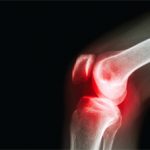To address the symptoms of hip or knee osteoarthritis (OA), practitioners use both surgery and conservative treatments, such as physical therapy, to reduce pain and improve physical function in patients. Recent research shows that conservative treatments are underused, but the use of surgery is on the rise, despite evidence that surgery does not always lead to positive outcomes. To reconcile these observations, Ellen M. Selten, MSc, and colleagues from Utrecht University in the Netherlands, set out to identify the patients’ reasons for selecting a specific treatment for knee or hip OA in primary and secondary care.
“More in-depth knowledge of patients’ reasons for choosing a specific OA treatment modality will aid in shared decision making and might increase patients’ usage of conservative treatment modalities,” write the authors in their latest study, which was published in the September 2016 issue of Arthritis Care & Research.
For the study, researchers conducted in-depth interviews using open-ended questions with 24 patients suffering from hip or knee OA. The participant sample was designed to be heterogeneous and provide the patient prospective regarding treatment options. The interviews were then transcribed verbatim and meaningful fragments of the text were coded and analyzed using qualitative data analysis software.
The Results
“This grounded theory approach, with thematic analysis, resulted in an overview of reasons for the choice of a treatment modality for OA, divided into main themes and subthemes,” write the authors.
The four key themes identified as influencing an OA patient’s treatment choice were: 1) treatment characteristics, which were its expected effectiveness and fear of its risks, its ability to be personalized and its accessibility; 2) personal investment in terms of time and cost; 3) personal circumstances, such as age, body weight, comorbidities and previous experience with treatment; and 4) support and advice from a patient’s social network and healthcare providers.
By far, the study participants’ biggest influence was their individual beliefs/understandings of a treatment’s characteristics, which include its effectiveness, an individual’s fear of treatment risks, personalization and accessibility. Some patients preferred surgery because they felt it was the most effective for relieving pain and improving mobility for daily activities and quality of life. Patients had concerns about the risks, consequences and side effects of each treatment option. Some were cautious of medication and injections because of their possible side effects, and others worried about developing a tolerance or addiction to medication. The negative short-term and long-term consequences of surgery were also a theme for participants, who expressed concerns about prosthesis rejection and the return of symptoms.
Several patients had positive attitudes toward conservative treatments, such as exercise and physical therapy, because these treatments could be personalized, enabling them to explore and expand their physical limits. “Patients preferred treatments that helped shift their physical limits so that they could increase their physical activity without increasing their symptoms,” write the authors.
A treatment’s accessibility was also considered—whether or not patients could easily fit a treatment into their daily schedules and carry out the treatment at home. But researchers note that “carrying out these exercises at home diligently was found to be difficult; patients indicated that they became less motivated over time.”
Additionally, researchers uncovered a tension between time spent on the treatment and time spent on the competing demands of daily life. “Treatment adherence and a better treatment outcome may be enhanced when the choice of an optimal therapy fits into patients’ daily lives,” write the authors. “Our study was the first to observe a patient’s fear of the long-term rehabilitation period because this surgery prevents them from performing their social roles (e.g., family caregiver).”
The authors conclude their research by noting that it not only adds to the literature on shared decision making for both conservative and surgical treatments of knee and hip OA, but it also identifies themes and subthemes for clinical use. Addressing some of the barriers to treatment, such as fear of exercise or opioid addiction, “is crucial to facilitate the consideration of conservative treatment.”
Although more research is needed, these findings may improve shared decision making by helping providers address the reasons that influence a patient’s treatment choice. “If healthcare providers identify reasons for not choosing specific treatment modalities, they can discuss them with their patients,” note the authors. “This may lead to better allocation of both conservative and surgical treatment modalities, and may improve successful referrals to conservative treatment modalities.”
Selten EM, Vriezekolk JE, Geenen R, et al. Reasons for treatment choices in knee and hip osteoarthritis: A qualitative study. Arthritis Care Res (Hoboken). 2016 Sep;68(9):1260–1267. doi: 10.1002/acr.22841. Epub 2016 Jul 28.
